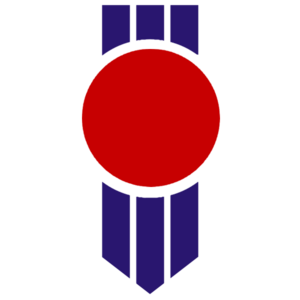Politics of Orientia
This article is incomplete because it is pending further input from participants, or it is a work-in-progress by one author. Please comment on this article's talk page to share your input, comments and questions. Note: To contribute to this article, you may need to seek help from the author(s) of this page. |
Politics of Orientia | |
|---|---|
 | |
| Polity type | Federal presidential constitutional republic |
| Constitution | Oriental Constitution |
| Formation | June 4, 2043 |
| Legislative branch | |
| Name | Oriental Congress |
| Type | Bicameral |
| Meeting place | Capitol |
| Upper house | |
| Name | Senate |
| Presiding officer | Watanabe Kaito,, Vice President & President of the Senate |
| Appointer | Electoral College |
| Lower house | |
| Name | House of Representatives |
| Presiding officer | Sasha Tulliver,, Speaker of the House of Representatives |
| Appointer | Exhaustive ballot |
| Executive branch | |
| Head of State and Government | |
| Title | President |
| Currently | Yoo Jong-hyun |
| Appointer | Electoral College |
| Cabinet | |
| Name | Cabinet of Orientia |
| Current cabinet | Cabinet of Yoo Jong-hyun |
| Leader | President |
| Deputy leader | Vice President |
| Appointer | President |
| Headquarters | Central Palace |
| Ministries | 18 |
| Judicial branch | |
| Name | Federal judiciary of Orientia |
| Courts | Courts of Orientia |
| Supreme Federal Court | |
| Chief judge | Alexander W. Montague |
| Seat | Supreme Federal Court House |
| This article is part of a series on the |
| Politics of Orientia |
|---|
In Orientia, the political system operates as a constitutional federal republic and a presidential system. It involves three separate branches that collaborate in power-sharing: the legislative branch, represented by the Oriental Congress consisting of the Oriental Representatives and the Oriental Senate; the executive branch, led by a President who serves as the head of state, a Prime Minister as the head of government; and the judicial branch, which encompasses the Oriental Supreme Court and lower federal courts and is responsible for exercising the judicial authority.
Each of the 13 distinct regional governments possesses the authority to create laws within its defined scope that are not expressly given to the federal government or prohibited to the states by the Oriental Constitution. Furthermore, each region possesses its own constitution modeled after the federal constitution, although with distinct variations. These state constitutions consist of three branches of government: an executive branch led by a governor, a legislative assembly, and a judicial branch. At the community level, governance is established in counties or equivalent administrative divisions, and beneath them are individual states, prefectures, districts, and special districts.
Elected officials hold positions through popular votes at the federal, regional, state and prefectural tiers, with the notable exception of the President, whose selection involves an indirect process via the Electoral College. The landscape of Oriental politics is largely defined by the Alliance Party and the Liberty Party, which have persisted since independence. Although other parties have also fielded candidates, only the AP and LP have maintained the forefront. The Alliance Party has generally advocated for more left-leaning policies, while the Liberty Party has leaned toward right-leaning ones. The majority of Oriental public officials are elected through single-member districts and secure their positions by receiving more votes than any other contender (a plurality), even if not necessarily a majority of total votes. Voting rights are broadly extended to citizens aged 18 and above, with the exception of convicted felons who are registered.

